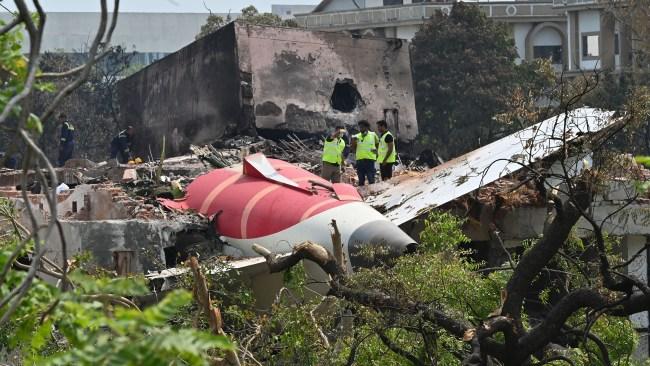_1752747767.jpeg)
Australian aviation expert Captain Byron Bailey has given his analysis on the Air India plane crash, claiming the latest findings indicate the captain must have intentionally turned off the fuel control switches.
On June 12, 2015, Air India Flight 171, carrying 242 passengers and crew members, crashed into a building in the city of Ahmedabad just moments after take-off on June 12. Only one person on the plane survived.
An additinal 19 people on the ground were killed when the Boeing 787-8 Dreamliner, bound for London’s Gatwick Airport, crashed in a densely populated neighbourhood.


British-Indian national Vishwash Kumar Ramesh was the sole survivor, miraculously only suffering minor injuries after he managed to flee the fiery wreck.
A preliminary report into the crash conducted by India’s Aircraft Accident Investigation Bureau found the plane’s fuel control switches were switched off three seconds after take-off.
The plane then began to lose thrust as fuel was not reaching the engines.
While the switches were turned back on, and power was restored to one engine the plane crashed not long afterwards, according to the findings.
An analysis of black box data suggests pilot-in-command Captain Sumeet Sabharwal, 56, placed the switches into the “cut-off” position, The Wall Street Journal has reported, citing US pilot sources familiar with the report.
The black box voice recording also indicated a back-and-forth unfolded between the two pilots, with first officer Clive Kunder – who was flying the aircraft – questioning the senior pilot’s move.
The revelations have cast a spotlight on the actions of the captain, as aviation experts claim cutting off the fuel supply could not have been done by accident.
Speaking to Sky News Australia on Thursday, July 17, about the developments, Captain Bailey was of the view the pilot-in-command made a conscious move to flick off the fuel switches.
“To us aviation people … we believe straight away that the only way this could have happened is if the captain turned off the fuel control switches,” he told Sky News Chief Anchor Kieran Gilbert.
“The first one, which is right by his right hand, three seconds up and lift off – and the second one, one second later.”
Captain Bailey claimed the co-pilot, also known as a first officer, would have had his “hands full” flying the aircraft.
“Both hands would have been on the yoke (control wheel) during this period, so he could not have reached down and turned the fuel cut off switches,” Captain Bailey said.
“They’re mechanical, they’re not worked by electricity, and they require absolute physical effort to lift the switch up, raise it over the gate and back down.
“So it had to be done by one of the pilots. But since the co-pilot was the one flying, then of course, the captain was one under suspicion.”
In his view, Captain Bailey claimed the crash was “suicide by the captain”.
The official report did not outline how the fuel switches could have transitioned to the cut-off position.
Asked if airline companies should implement a “fail-safe” measure to prevent similar incidents occurring, Captain Bailey said a video-recording mechanism is needed in the cockpit.
“There should be a camera, a closed-loop thing that only lasts for 30 minutes, but of course, the final 30 minutes of any flight,” the pilot with more than 25,000 flying hours said.
In a statement after the initial report was released, Air India said it continues to “mourn the loss” of all lives lost in the crash and is “committed to providing support during this difficult time”.
The company said it also acknowledges “receipt” of the preliminary report released by the Aircraft Accident Investigation Bureau.
“Air India is working closely with stakeholders, including regulators. We continue to fully cooperate with the AAIB and other authorities as their investigation progresses,” it said.
Meanwhile, the meedical records for the Air India pilot k!lled in last month’s crash were reportedly turned over to investigators amid reports he’d been suffering from depression and other mental health issues.
Captain Sumeet Sabharwal, 56, was the lead pilot when the London-bound Boeing 787 Dreamliner went down in Ahmedabad on June 12, killing 241 people on board and leaving just one survivor.
Sabharwal, who had more than 15,000 flying hours under his belt at the time of the tragedy, had taken medical leave in recent years due to apparent mental health woes, the Telegraph reported.



